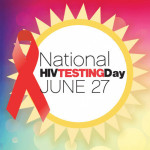Since November 2005, the U.S. Food and Drug Administration (FDA) has considered the possibility of an over-the-counter (OTC) rapid HIV test. This summer, OraSure Technologies completed another leg of the FDA approval process required to put its oral swab HIV tests on the shelves of local drug stores.
Specifics about the remaining process are unavailable, but we do know the proposed OTC test is similar to the OraQuick Advance Rapid HIV-1/2, which has been used in clinical settings since 2002 and delivers results in 20 minutes. Advocates have given overwhelmingly positive testimonies to the FDA advisory committee. And other companies have expressed interest in the field, so consumers can expect a competitive market.
It’s paramount that more people know their HIV status. About 1.1 million Americans are living with the virus, but one in five doesn’t know it—and these unaware people accounted for half of the 56,300 new infections in 2007. Furthermore, studies show that people who know they’re positive modify behavior so they are less likely to spread the virus.
An OTC test would reach those who don’t have access to a clinic or don’t want to get tested in a medical setting. And the tests would appeal to myriad reasons a person might want to get tested, from the couple ready to take their relationship to an intimate level to individuals about to switch health insurance companies or donate blood and who want to privately confirm their status beforehand to avoid public documentation.
“It’s important to allow individuals to have control over what’s going on with their bodies,” says Yvette Calderon, MD, MS, of Jacobi Medical Center in the Bronx, New York. Having an OTC rapid HIV test, she says, “is just as important as having it within a medical setting. It’s important to have options.”
For an OTC HIV test to have the optimal effect, it must meet some basic requirements. Obviously, it must work well (the OraQuick Advance is more than 99 percent accurate). And it must be easy to take. The directions and information must be simple and clear—and they must be available in other languages.
In addition, the manufacturer must provide counseling services and connect people to medical care. “We view that as critically important,” says Ron Ticho, the vice president of corporate communications at OraSure. “We understand that educating the consumer will be important in terms of how we market the test.” The Constella Group is currently designing a program for OraSure that will provide phone and Internet support 24/7. Constella already provides this service for the CDC.
Finally, the test must be widely available and affordable. Clinics currently pay about $12 to $17 for an OraQuick test—but that doesn’t include the packaging and counseling services that will presumably drive up the OTC retail price.
In short, as Steve Gibson, of the San Francisco AIDS Foundation’s Magnet site, sums up: “The goal is to make certain that people who may be at greater risk but less likely to come in for testing are going to have access to it.”
But is the general public psychologically prepared to take a potentially life-altering diagnostic test outside of a medical setting? “No one is prepared to be HIV positive,” says Cornelius Baker of the National Black Gay Men’s Advocacy Group. “But anyone going to a drug store and withstanding the presumed stigma of [buying] an HIV test is certainly prepared to be tested.”
“If they are self-motivated to go to a store to buy a test,” adds Calderon, “that is highly suggestive that they will be motivated to get engaged in care.”
And what will happen to community organizations that exist solely to provide testing and link people to care? Ernest Hopkins of the San Francisco AIDS Foundation says they could refocus and evolve to serve more high-risk populations. AIDS Healthcare Foundation’s Whitney Engeran-Cordova doesn’t foresee OTC HIV tests shuttering community testing sites. Many people will still prefer to get tested in a professional setting with a counselor, he explains, but they might not have access to medical care or want to talk with their doctors about their HIV risk.
Then there’s the question of how OTC rapid HIV tests will affect stigma. “The day we walk into Walmart and see an HIV test on the counter is the day we begin looking at HIV/AIDS differently,” says Thomas Donohue of Who’s Positive, a nationwide youth-focused outreach group. “That alone will break down stereotypes and encourage people to know their status.”
His optimism isn’t shared by Marjorie Hill, PhD, CEO of New York City–based Gay Men’s Health Crisis. She points out that an anonymous OTC HIV test is already on the market and that it has had no effect on reducing stigma or stopping the epidemic. (The Home Access kit came out in 1996. You can buy the $60 kit then mail in a dried blood sample, collected using a finger prick. Results are available via phone the next business day.)
Another big concern for OTC rapid HIV tests is the seroconversion period—the three month acute phase directly after infection in which the virus might not show up on a rapid test even though a person is highly contagious. Failure to grasp the concept of the window period could be a crucial error. Someone, for example, who was exposed to HIV and then took a rapid test a few days later might receive a false-negative and a false sense of security. But that can also happen in a medical setting, where pre- and post-counseling are becoming less common.
A big-picture forecast about OTC testing is found in an article by Rochelle P. Walensky, MD, MPH, and A. David Paltiel, PhD, titled “Rapid HIV Testing at Home: Does It Solve a Problem or Create One?” They write: “We do not anticipate that OraQuick will have a profound impact, either on the public health crisis or on the underserved populations in greatest need. Home HIV testing will attract a predominantly affluent clientele, composed disproportionately of HIV-uninfected, ‘worried well’ persons and very recently infected persons with undetectable disease.”
And yet Paltiel supports making OTC rapid tests available. He tells POZ that “the overwhelming majority of people are going to have a wonderful experience with the test,” then he adds: “I just want to manage expectations.”

Istock
Take Home Testing
Rapid at-home HIV testing is inching closer to reality. Is that a good thing?






2 Comments
2 Comments